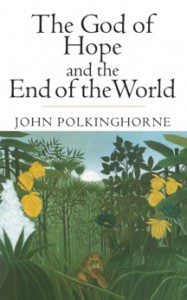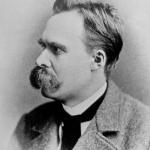 There are a number of topics worth some thought and discussion – topics where our current understanding of science plays a role at some level. The questions of origins and of miracles top the list, but the nature or possibility of an “Age to Come” with new heavens and a new earth also raises questions. There seems no way under the current scientific laws for any future hope to remain. The robust conversation around Richard Middleton’s new book A New Heaven and a New Earth: Reclaiming Biblical Eschatology highlights the kinds of questions that are raised. One exchange in the comments highlights the kinds of questions that can be raised (I’ve only picked out relevant bits):
There are a number of topics worth some thought and discussion – topics where our current understanding of science plays a role at some level. The questions of origins and of miracles top the list, but the nature or possibility of an “Age to Come” with new heavens and a new earth also raises questions. There seems no way under the current scientific laws for any future hope to remain. The robust conversation around Richard Middleton’s new book A New Heaven and a New Earth: Reclaiming Biblical Eschatology highlights the kinds of questions that are raised. One exchange in the comments highlights the kinds of questions that can be raised (I’ve only picked out relevant bits):
P: The question of animals becomes merely the tip of an ice-berg. Does heaven or the new creation have spatial dimensions? Is there are up or down? Is there matter? Gravity? Energy? Are there objects?
If Jesus walks through the wall, how come he doesn’t also fall through the floor?
If the answer to any of the above questions is “no”, then the eschatological environment is something so ridiculously unlike anything we know or can imagine then the whole lot is up for grabs, and becomes (it would seem to me) not worth pondering at all.
If there ARE even basic attributes like place and cause&effect then the environment starts to need almost all of the things we have in our universe.
R: Most descriptions of new creation in the Bible look like this world renewed (without sin). But I do struggle to understand Paul’s notion of an “immortal” or “incorruptible” body, or his idea that “flesh and blood” cannot inherit God’s kingdom. So some sort of radical transformation is coming.
P: As far as cell decay and disease goes, biological “immortality” is less of a difficult issue for me. I wouldn’t be surprised if the next couple of hundred years of medical science enable much of this anyways. Gene and cell therapies might get us there, at least this can be conceived as possible.
My real issue with immortality is related more to the wider environment. Let’s say you fell of a cliff in the “new creation”, would the body suffer impact injury? Does an immortal body bleed? Does it need food and water? Does it need oxygen? If it doesn’t need oxygen and cannot lose blood, then suddenly a whole bunch of systems and features become redundant….
Is there pain? If not pain, what about frustrations – can a resurrected person be frustrated? Does my foot stumble on a stone when I walk?
To me, these environmental concerns make a future “immortal”, or “non-environmentally dependent” body seem too far fetched and unimaginable.
I’m not as hopeful that medical science will solve the problems of cell decay and disease, but perhaps. At least there is some kind of imaginable path toward biological immortality because biological systems are continually renewing themselves and we may be able to sustain these processes over life spans longer than 100 years. The question of a fall off of a cliff is a good one of a very different sort. In fact, Iain Provan uses this example in his book Seriously Dangerous Religion to describe how the Old Testament portrayal of the original creation did not envision a total absence of pain and suffering. Cliffs are part of good creation. Gravity is a part of God’s creation and impact from a height causes physical damage. The pain and suffering that arise from the Fall are a consequence of the human embrace of evil rather than these physical aspects of the world.
The laws of thermodynamics at work in an expanding universe raise another set of questions. It appears that eventually life as we know it will cease to exist because the clumps of matter and energy that support life will cease to exist, and medical science and biological immortality cannot solve this problem.
What are we to make of the age to come? Over a series of posts I will turn to a book by John Polkinghorne The God of Hope and the End of the World to focus a discussion on the nature of the New Creation from the perspective of a scientist and a theologian. This isn’t a new book, it was published in 2002, but I only recently came across it. The book contains three sections – I. Scientific and Cultural Prologue, II. Biblical Resources, and III. Theological Approaches. Each of these is worth some discussion, starting today with the scientific prologue.
The history of the universe has been characterized by an evolving fruitfulness.
The universe as we know it today emerged from the fiery singularity of the big bang, some 15 billion years ago. Initially that world was extremely simple, being no more than an almost uniformly expanding ball of energy. In the course of its long evolutionary history, the universe has become structured and diversified to a very high degree. (p. 3)
Although the universe appears to have been lifeless for the first eleven billion years of its existence, there is a real sense in which it was pregnant with the possibility of life from the very beginning. (p. 4)
Evolutionary history seems to unfold through the interplay of two contrasting tendencies: ‘chance’ (by which is meant the particularity of historical contingency, that this happens rather than that), and ‘necessity’ (by which is meant the general lawful regular environment within which the process is played out, the reliability of the world). (p. 5)
While chance may have played a role in the precise form diverse life forms assume (five fingers rather than four; hair, feathers, or spines), necessity controls the range of possible forms and the niches that they fill. There are laws of chemistry and physics in play. Periodic rare events have played a role in the way life has developed as well, asteroid collisions for example. Threats remain that could potentially reshape, or even doom our planet. The eventual demise of our sun is a virtual certainty, although this should be billions of years in the future. Even if life, including human life, spreads to other planets, outliving the sun, the demise of the universe also seems certain. … Possibly in a fiery crash, but more likely it appears into an essentially uniform expanse of low grade radiation, no planets, no stars, no life.
‘As far as science is right in describing the future. …’ But theology claims that what is ultimate is not physical process but the will and purpose of God the Creator. God’s final intentions will no more be frustrated by cosmic death on a timescale of billions of years than they are by human death on a timescale of tens of years. The ultimate future does not belong to scientific extrapolation but to divine faithfulness. (p. 12)
Polkinghorne then turns to consider what insights we may draw from natural sciences concerning elements of continuity and discontinuity in the age to come. He sees process, relationality, information, and mathematics as important considerations.
This universe is a world of temporal process and, if we believe in the consistency of the divine Creator, we should not expect that its successor will be so radically different that it is, by contrast, a world of timeless existence. It too will surely have its developing history, though a history characterized by persisting fulfilment rather than transient coming-to-be. (p. 15-16)
Relationality is interesting. One thing we’ve learned from quantum physics is the inherent relationality in the structure of the universe. “It appears that even the subatomic world can not properly be treated atomistically.” (p. 16) Reductionist approaches are always limited. The universe is not constructed of a number of isolated particles or beings but there are intrinsic interrelations. “For eschatological thinking, this emphasis on relationality implies the inadequacy of a purely individual concept of human destiny.” (p. 17) The remainder of creation is not simply a backdrop before which the human drama is played out – to be discarded as we move on to the next act in the human drama. We are in relationship with all of creation.
Information and mathematics are a bit more abstract – but information makes us who we are and the mathematics that so beautifully describes the physical world is an element of reality independent of the existence of the universe.
Natural science cannot provide answers for the age to come, New Heavens and New Earth, but can provide some constraints for consideration (perhaps). Polkinghorne concludes this section:
If the paradox is to receive a resolution, it will be beyond the reach of science on its own. We shall have to explore whether theology can take us further by being both humble enough to learn what it can from science and bold enough to hold firm to its own sources of insight and understanding. (p. 27)
What does science have to tell us about the age to come?
What is beyond the reach of science?
If you wish to contact me directly you may do so at rjs4mail [at] att.net.
If interested you can subscribe to a full text feed of my posts at Musings on Science and Theology.















